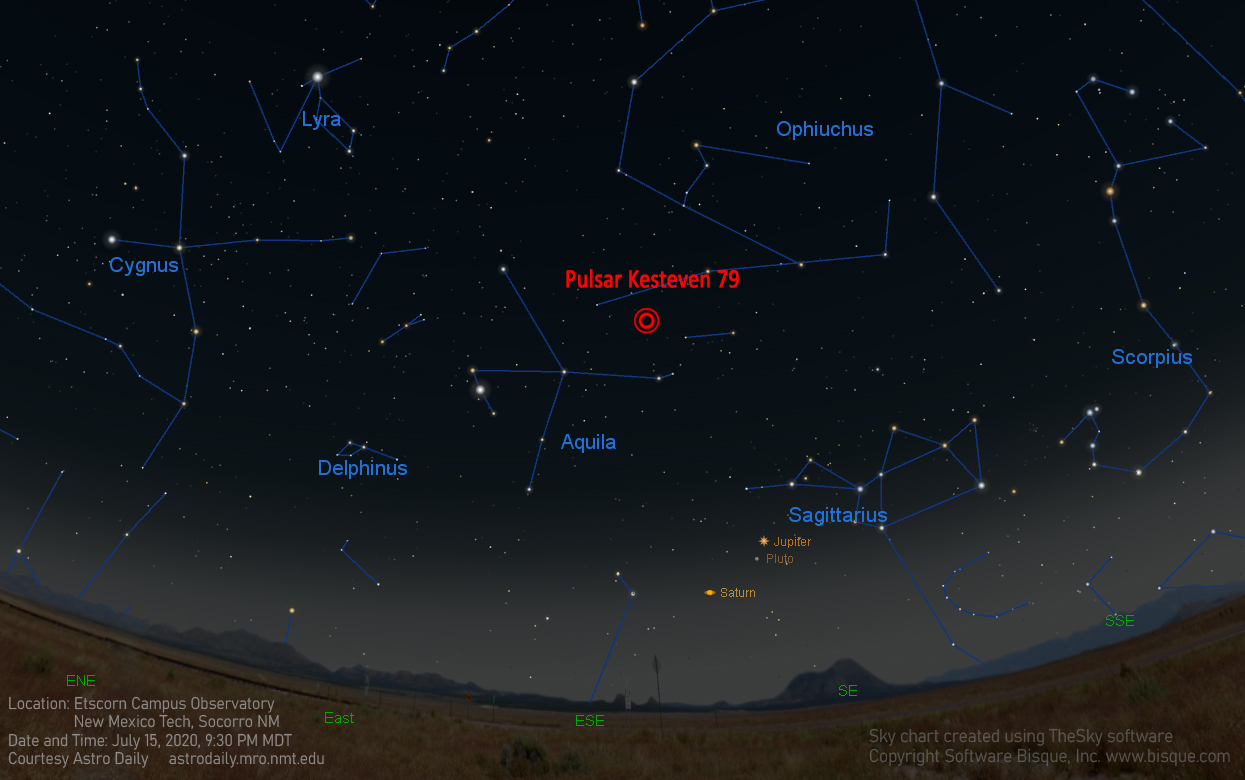Today we honor Dame Susan Jocelyn Bell Burnell, the astronomer who, as a postgrad student, co-discovered an exotic type of celestial object, the pulsar.
At the time of her discovery in 1967, Bell Burnell was working on her Ph.D. in Physics at the University of Cambridge under the guidance of Anthony Hewish. She helped to construct and then operate a radio telescope that was used to study quasars, extremely luminous objects powered by supermassive black holes found in the center of some galaxies. At that time, the data that was gathered from their radio observations was not digitally written to a storage medium as it is today, but was printed out on chart paper – literally miles and miles of chart paper.
One of Bell Burnell’s duties was to check the 100 or so feet of chart paper produced daily to locate potential quasars. With her sharp mind and keen eye, she picked a needle out of a haystack – the needle being about an inch-worth of an unusual signal buried within all that chart paper. This signal revealed a radio source that was pulsing too fast and too regular to be a quasar. Never having seen such a signal before, Burnell Bell and Hewish jocularly labeled it LGM, for Little Green Men. After determining that the signal was not from aliens, nor from orbiting satellites or TV signals, Bell Burnell and Hewish determined that the radiation was being emitted from rapidly spinning, super-dense collapsed stars, dubbed pulsars by the media that published the news of the discovery at the time.
Anthony Hewish received the Nobel Prize in 1974 for the discovery of pulsars; the credit was not shared with Jocelyn Bell Burnell. However, over her long career she has received numerous other awards and acknowledgements for her professional work, which includes serving as the President of the Royal Astronomical Society from 2002—2004, and as President of the Institute of Physics from 2008–2010. She is currently the Chancellor of the University of Dundee.
So on this day, July 15, 2020, we would like to wish Dame Bell Burnell a very happy 77th birthday and sincerely thank her for her outstanding contributions to astronomy.
Time to Look Up!
Would you like to see a pulsar for yourself? Unfortunately, pulsars are not bright enough in the visible spectrum to be seen with naked eye nor with the aid of most amateur optical equipment. If you could see one, however, there’s a fine example in the outer region of the constellation of Aquila, currently visible most of the night from our location here at New Mexico Tech’s Magdalena Ridge Observatory near Socorro, New Mexico.
Pulsar Kesteven 79 is the compact central object of a supernova remnant. News of its discovery from data acquired with the Newton X-Ray Multi-Mirror Mission was published in early 2005. Its behavior is consistent with that of rotation-powered pulsars; in this case a neutron star with such powerful magnetic fields that charged particles are accelerated and emit radiation centered around the pulsar’s magnetic poles. As the pulsar rotates the regions of the star emitting the radiation sweep through the sky much like a beam of light from a lighthouse, producing the pulses of electromagnetic radiation. Kesteven 79 is a 105 millisecond X-ray pulsar, with a spin rate of about 10.5 revolutions per second.
To locate Kesteven 79, refer to the sky chart above depicting tonight’s sky created with Software Bisque’s TheSky software.
Check in with us tomorrow as we continue to talk about the constellation Aquila, the Eagle, and its place in the Summer Triangle.
M. Colleen Gino, MRO Assistant Director of Outreach and Communications

